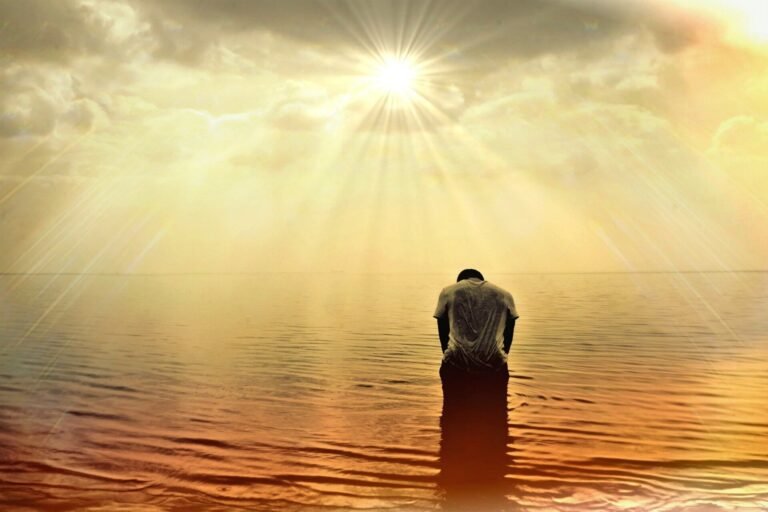But What About Sunscreen?
**This is the second part of a two-part series on vitamin D and sunlight. Please find the first blog post of the series here.**

Summary: Living in a desert with abundant sunshine, the author explores sunlight as a potential key to healing Type 1 Diabetes (T1D). Acknowledging risks like skin cancer, the author opts for “sensible sun exposure” and consider what this might look like for different locations, skin colour, and body size. The author supplements with Vitamin D when needed, ensuring holistic health amidst sun-rich living.
Since I decided to set off on this journey to heal my diabetes, I have found myself relocated to a country with a lot of sunshine. A lotta, lotta sunshine… I now live in the desert! It’s coming into summer time now so the temperatures are getting up to the late-40s or hotter and I am being met by the blazing sun every time I leave my house. It started me thinking that maybe God had actually intended to make the sun a key piece in the puzzle to healing my T1D.
I am also aware that Daniel Darkes, who healed his own Type 1 Diabetes, does a lot of running outside all year round. I suspect that, even in the UK where he lives, he will still be exposed to a fair amount of sun on a weekly basis.
I discussed in my previous blog post about the importance of adequate vitamin D in controlling blood sugars and also its potential in healing T1D. I outlined the sources of vitamin D through diet, supplementation and sunlight and then demonstrated how I felt sunlight offers the optimum solution for vitamin D deficiency. In this post, I am digging deeper into sunshine exposure, its benefits and risks.
Safe Sun Exposure
How Much Sunlight Is Enough Sunlight?
You don’t need a lot of sun to get Vitamin D sufficiency… For Caucasians, just 13 minutes of exposure to the midday summer sun in the UK is sufficient to maintain healthy Vitamin D levels. Similarly, just 30 minutes of midday sunlight exposure in Norway produces enough Vitamin D to maintain healthy Vitamin D levels.
There are, however, a series of factors that will affect the required exposure time for various individuals. Firstly, there is the issue of location, location, location. People living further from the equator require more sunlight exposure than those that live in equatorial regions. Indeed, some research studies have found that people living in particularly northern countries, such as Norway, Boston (USA) and Edmonton (Canada), struggle to produce any vitamin D from sunlight in the winter months. At the other end of the spectrum, Vitamin D deficiency is also common in extremely sunny climates, such as the UAE, where the sun is so pervasive that people often stay inside in air conditioning all day to avoid its impact. However, sun exposure in these latitudes is much more full-on and thus less time in the sun is required. But it still needs to be done!
Secondly, skin colour is important. The pigment of your skin is a result of the amount of melanin it contains. The darker your skin, the more melanin it is likely to have. Melanin acts as a natural sunscreen. Therefore, people with darker skin tones require longer in the sun to produce the same amount of Vitamin D in their skin, with estimates suggesting that darker skin tones may need anything up to three hours more of sun exposure each day. For example, 30 minutes in the summer sun in a bathing suit can initiate the release of 1.25mg of Vitamin D in white people, versus 0.65mg in tanned people and 0.25mg in dark-skinned people.
Lastly, the less skin you expose, the more time you need in the sun to meet your vitamin D requirements. So, if you dress modestly, you will need to spend more time in the sun to get the remaining exposed skin producing enough vitamin D. I prefer to wear a hat and sunglasses in order to prevent sun damage on my face. However, since this is a relatively small area of skin on my body, this is unlikely to dramatically affect my rate of vitamin D production.
What About Sunscreen?
I know for certain that avoiding sunburn is a must. The links between sunburn and skin cancer are well-documented. But would I go far enough to agree with Baz Luhrmann’s famous advice…?
Actually, no, I don’t agree with Baz. I think there is a better middle ground. Going out in the sun without sunscreen for the first 10-30 minutes, depending on the time of day and strength of the sun in any given latitude, is enough to give me the benefits of sun exposure to ensure adequate vitamin D absorption and serotonin production.
How Am I Translating This Information Into My Day-To-Day Life?
On days that I go to the pool or the beach, I apply sunscreen when I arrive there. It takes approximately 15-20 minutes for sunscreen to be absorbed into the skin so, during that time, my skin is getting its required exposure.
However, there are still weeks when I might not get to the sunset or the pool. Therefore, to make sure I still get my vitamin D during these busy times, I also take vitamin D supplements. I take 250 mcg a day. However, for me, these are an additional top-up. I suspect that very little of them will actually be absorbed by my system.

GET HEALINGT1D’S FUTURE ARTICLES IN YOUR INBOX!
Get the latest musings and findings straight to your email inbox.

Natalie is a blogger with Type 1 Diabetes. Natalie’s special gifts are questioning the status quo and being a rebel. She is using these gifts to question medical ‘knowledge’ and find a true cure for Type 1 Diabetes.



 Very few natural foods contain a good amount of vitamin D. Those that do include several types of fish (salmon, herring, sardines and tuna) and mushrooms. Other food sources that provide vitamin D are fortified foods, where vitamin D has been artificially added. These include cow’s milk, cereal, orange juice and soy milk. but the chance of being able to fully consume the required daily allowance of Vitamin D purely through what you eat is pretty low. We just don’t eat enough of these kinds of foods. So whilst I do now eat a good amount of fish (see my blog post
Very few natural foods contain a good amount of vitamin D. Those that do include several types of fish (salmon, herring, sardines and tuna) and mushrooms. Other food sources that provide vitamin D are fortified foods, where vitamin D has been artificially added. These include cow’s milk, cereal, orange juice and soy milk. but the chance of being able to fully consume the required daily allowance of Vitamin D purely through what you eat is pretty low. We just don’t eat enough of these kinds of foods. So whilst I do now eat a good amount of fish (see my blog post  The next obvious place to look for additional sources of Vitamin D are through supplements. They are easy to use and provide a guaranteed level of Vitamin D each day. Easy! Or is it?
The next obvious place to look for additional sources of Vitamin D are through supplements. They are easy to use and provide a guaranteed level of Vitamin D each day. Easy! Or is it?

































 Dairy affects my mood?! I never knew this!! When I moved to the Middle East six months ago, the amount of dairy in my diet dropped considerably. I just didn’t find it so readily available out here. I didn’t really notice how little of it I was eating until I moved into our new home and started reverting to my old way of eating. And, boy, did I get angry… And moody… And crabby… And exhausted… And tearful… And snarky… And, frankly, depressed.
Dairy affects my mood?! I never knew this!! When I moved to the Middle East six months ago, the amount of dairy in my diet dropped considerably. I just didn’t find it so readily available out here. I didn’t really notice how little of it I was eating until I moved into our new home and started reverting to my old way of eating. And, boy, did I get angry… And moody… And crabby… And exhausted… And tearful… And snarky… And, frankly, depressed.


Recent Comments: